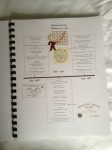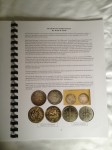Jun 22, 2015 | exonumia, fun, tokens
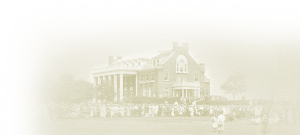 In the 1960s when my parents’ first child was becoming old enough to be enrolled in school, they decided it was time to move out of Brooklyn for the better schools of Long Island. One day, my father found an advertisement in the newspaper for some new homes being built in an old hamlet on Long Island called Inwood. In New York-speak, a hamlet is not an official location but a section of a larger village or township named for jurisdictional purposes. Hamlets are very much like any other area but without its own formal government.
In the 1960s when my parents’ first child was becoming old enough to be enrolled in school, they decided it was time to move out of Brooklyn for the better schools of Long Island. One day, my father found an advertisement in the newspaper for some new homes being built in an old hamlet on Long Island called Inwood. In New York-speak, a hamlet is not an official location but a section of a larger village or township named for jurisdictional purposes. Hamlets are very much like any other area but without its own formal government.
Inwood was one of the Five Towns along with Lawrence, Cedarhurst, Woodmere, and Hewlett. Each had its own character, divisions, points of interest but were together geographically, socially, and and as a larger community. Some of that has changed over the years, but the Five Towns still exists as a central part of life in that area. Although identified as a hamlet, Inwood had its own identity from the rest of the Five Towns. Inwood was more working class than the rest of the Five Towns. It is the home to two schools that were part of the Lawrence-Cedarhurst Public Schools (now just the Lawrence Public Schools), P.S. #4 was the kindergarten and P.S. #2 was the elementary school (then Grades 1-6). There was some industry in an area we called “the factories” and some offices. Not too far was a bowling alley, a few gas stations, and the A&P. A few churches, a synagogue (that no longer exists), the VFW Hall, and the volunteer fire department was all part of daily life.
Many of us have gone in own directions but we cannot forget what made Inwood home for us. One of the ubiquitous parts of Inwood was the golf course. Officially, it is called the Inwood Country Club. Aside from being a private club where many of us were not allowed to enter, it dominated the entire length of Donahue Avenue that was our major route when we walked to school. There were no sidewalks on that side of the street. Trees hung over the shoulder and in the spring and fall you can see and hear the men playing golf.
The last time I visited Inwood, I noticed that the road was better paved and the shoulder that we walked along was no longer available. The fence line came to the edge of the road and a distinct curb was added. The trees were thinner and he shrubbery that dominated the fence when I walked that road was gone. You can now see the golf course from the street.
Although I never went into the Inwood Country Club until I found someone to invite me in the 1980s, its presence looms large in my memory. Our backyard backed up into a swamp-like area owned by the club that would flood when Jamaica Bay overflowed. It was a buffer between the bay and the golf course. The only other landmark in the area that dominated as much as the Inwood Country Club was Kennedy Airport across the bay.
Inwood Country Club was opened in 1901 by Jacob Wertheim because there were few places to play golf on Long Island. Its claim to fame for the golf world is that it was the host to the 1921 PGA Championship that was won by Walter Hagen and the 1923 U.S. Open Championship won by Bobby Jones. The 1923 U.S. Open was Jonse’s first major championship of his professional career. Jones won with what was then considered one of the finest shots on the 18th hole of the playoff that was then called “the shot heard around the world.”
Whenever I find something about Inwood that finds its way for sale I usually try to buy it. Souvenirs from Inwood are not plentiful and numismatic-related souvenirs are even rarer. But when a token honoring the 50th Anniversary of the Inwood Country Club came along, I was a strong bidder. I might have overbid, but I had to make this token part of my collection.
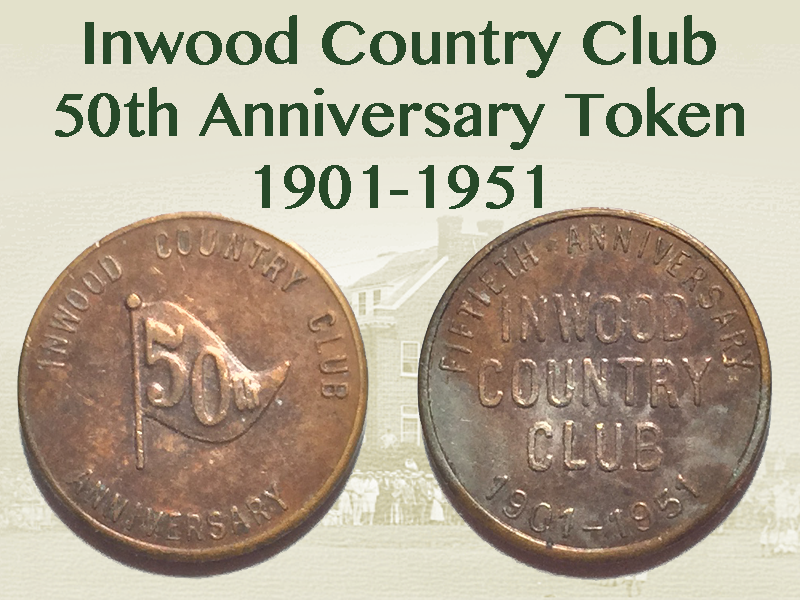
It looks like it is made of a white metal, maybe zinc, coated with copper based on the wearing on the reverse. It is 16.75 mm in diameter making it smaller than a dime, which is 17.9 mm in diameter. But it has survived well for being that small and 64 years old.
This goes to show that you do not have to collect coins to have fun in numismatics!
Inwood Country Club clubhouse image courtesy of the Inwood Country Club.
Jun 14, 2015 | coins, fun, news, technology, web
When I discussed the American Numismatic Association election, I noted that my posting has been more sporadic because of a business I started. This will continue at least for the next few months.
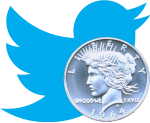 However, if you are looking for different types of coin news and information, I invite you to follow me on Twitter. You can find me @coinsblog. For those of you not familiar with Twitter, it is a social media site where users post information using 140 characters or less. This makes it difficult to post long diatribes of extensive notes. What it is good for is to post short messages with a link to longer stories.
However, if you are looking for different types of coin news and information, I invite you to follow me on Twitter. You can find me @coinsblog. For those of you not familiar with Twitter, it is a social media site where users post information using 140 characters or less. This makes it difficult to post long diatribes of extensive notes. What it is good for is to post short messages with a link to longer stories.
Those who either follow my Twitter feed on the web, using their favorite app, or the the box on the sidebar of this page will note that I will post links to coin, currency, and bullion-related stories from around the web. These stories are not from the usual set of numismatic-related websites like CoinNews.net, CoinWeek, Coin World, Numismatic News, etc. I figure that many of you would read these sites without my prompting. If you are not reading the articles on those sites, here is my endorsement for all of them. I read them all regularly.
Items I do post are from other news sources from around the web. Most of the articles are from media outlets but there are some financial blogs that make it into the mix.
The stories I post are about coins that have been about issued or planned to be issued coins and currency; news about bullion; some economic news that will affect circulating coins and currency; stories about shows where ever they appear; stories about collectors and collecting; or anything else that catches my eye.
The stories that end up in my Twitter stream are “hand selected.” This means I have a few saved searches and I periodically read through them looking for something interesting. Sometimes there are a lot of stories on one topic, such as the recent stories about France being upset with Belgium for striking a Waterloo commemorative. Other times it could be serious but amusing items like Zimbabwe phasing out its inflation currency at the rate of on U.S. dollar for ever Z$35 Quadrillion (that’s Z$35,000,000,000,000,000 or Z$35 thousand million) of inflation currency.
Similarly, I will post interesting pictures I find onto Pinterest. Pinterest is social media for pictures. Pictures are pinned to Pinterest like a bulletin board. You can follow those who pin on Pinterest (pinners) or their individual pin boards. I keep a few boards on Pinterest that I pin to as I look at the various articles. I try to pin something different than the usual coins. Most comes from the articles I find as I search for news stories.
Unless I find something different, most of the items from the news I post to my “In The News” board. One of my popular boards is “Coin & Currency Art” where I post items made from coins or currency or items made to look like coins and currency (that are not or intended to be counterfeit). If you like looking at interesting items, you might want to join Pinterest and start to follow many of the numismatic-related pinners already on the site.
I will try to finish some posts I started shortly. Until then, stay tuned and watch social media for my take on the on-going news.
Apr 2, 2015 | fun
Did you get it? Did you figure it out? If you read yesterday’s post you would have discovered:
- H.R. 1776 has not been introduced in the 114th congress and there is no such bill as the U.S. Mint Restoration Act. But it sounded good!
- Even if the House of Representatives passed such a bill, it would still have to be voted on by the Senate and signed by the president.
- As for some of the actors in this play, House Financial Committee Chairman is Jeb Hensarling, not “Jim Hensling.” I don’t think they are related.
- anking member of the House Financial Committee is Maxine Waters, not Max Waterston. Max is not related to Sam
- Janet Yellen is a home girl (Brooklyn born, like your blog host) and Chair of the Federal Reserve Board of Governors. I’m sure Jan Yelling is a nice person, but she’s not running the Fed.
- In an attempt not to use “Rhett Butler,” Rhett Jepson is the U.S. Mint’s Principal Deputy Director. I don’t know who Jett Butler is—but he sounds like he should be a kicker or something.
- Rosie Rios is a very nice person and is the Treasurer of the United States. Rosalind Rio could be her evil twin, but that is not confirmed.
- Finally, Jake Lou sounds like a good-ol’ boy, but he is not the Secretary of the Treasury. Jacob “Jack” Lew is the man in that job probably way too busy for this stuff.
In short:

Like the Orson Well’s broadcast of The War of the Worlds, all you had to do is change the channel (or check another source).
That was fun!
Now back to our regular numismatic content.
Apr 1, 2015 | fun
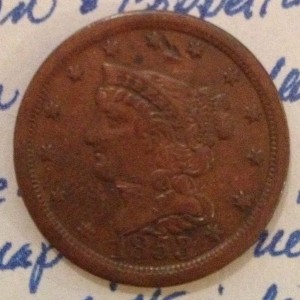
1853 Braided Hair Half Cent Obverse – The last half-cent before being revived for 2016.
Starting in 2016, the U.S. Mint will be required to produce the half-cent, two-cents, three-cents, and 20-cents coins using the designs that appeared last on those coins. To save money, the half-cent will be made of copper-coated aluminum while the two-cent coins will be similar in composition with the current Lincoln cent. Three-cent coins will be made of copper-nickel with ratio of 75-percent nickel to 20-percent copper and 5-percent zinc. The 20-cents coins will be a clad coin with no reeds on the edge.
-
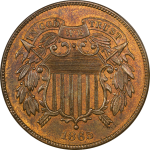
-
1865 Two Cents
-

-
1866 Three-cent nickel
-
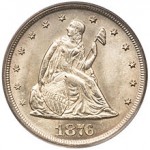
-
1876-CC Twenty cents
Claiming that they are being faithful to the constitution, Financial Committee Chairman Jim Hensling said that to bring back these coins would not only increase the options for the American public but that the seigniorage earned from making these coins would go a long way to help balance the budget. Speaking with Hensling, Ranking Member Max Waterston was optimistic that this would provide needed relief for low-income people looking to save their change.
The measure was supported by supported by Jan Yelling who also expressed concern that the coin rooms were overflowing with unused dollar coins. However, with expansion at many of the Federal Reserve member bank’s coin rooms that there should not be a problem supplying the country with the new coins.
Looking a little forlorn at the announcement was the U.S. Mint’s Principal Deputy Director Jett Butler. On the job since January, Butler has to figure out how to ramp up production of these new coins in time to have them in circulation by 2016. However, we were assured by Treasurer Rosalind Rio that the U.S. Mint will have the resources to allow them to bring up the production levels to meet the demand.
Bringing back these old denominations will certainly introduce new collectibles to the numismatic community. It will also be an opportunity for the makers of folders and albums to add to their portfolio. It is possible that the result will introduce new people who will collect these coins and learn about the past and why these coins were originally part of the U.S. currency system.
Finally, in a statement read on behalf of Jake Lou, who could not attend, he applauded the work of congress and asked that they consider allowing the U.S. Mint to replace the paper one-, two-, and five-dollar notes with coins. Lou noted that the seigniorage on a five-dollar coin could be as much as $4.50, which could go a long way to help balance the budget. Hensling and Waterston were non-committal on the proposal.
Half-cent image courtesy of the author.
All other images courtesy of Wiki Media Commons.
Jul 14, 2014 | coins, fun, grading
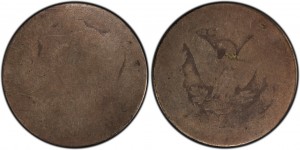
This 1878 eight tail feathers Morgan dollar, graded PCGS PO-1 (none worse!), is from the End of the Trail VIII Collection of Low Ball Morgan dollars that will be exhibited for the first time during the 2014 ANA World’s Fair of Money.
In 2009, PCGS began to offer rewards for what they called and “everyman” or second tier registry competition. Apparently, it became a race to the bottom. While people are looking for the best coins their money can buy, someone went quite the opposite and set out to find the worst of the worst.
“It is the all-time finest, or in this case, the worst-of-the-worst basic Morgan dollar set in the Low Ball category. While collectors have a lot of fun with the Low Ball sets, remember that it often is just as difficult and exciting to build a low grade set as it is to assemble a high grade collection,” said PCGS President Don Willis.
Who am I to argue. After all, someone put together a set of PO-1 and FR-2 coins, many marked “None Worse,” and probably cost more to have them graded than the coins cost to purchase. Then who is to say that some did not find their way into a pocket or two before being submitted?
Cynicism aside, there is something ironic about putting together a set like this and it has to do with just having fun. It had to be a lot of fun to go around and search through junk boxes or ask dealers for their worst coins. It must have been interesting seeing the face of some of the dealers when they hand over their worst Morgan dollars only to be told they were not bad enough.
Think about it for a moment. Dealers are looking for the best, most pristine inventory to sell to eager buyers who walk by their cases looking at the pretty and shiny coins. When coins are not good enough to make the inventory, they are thrown into junk boxes for people to pick through. Larger coins, like Morgan dollars, would be sold for a price around their melt value since there would not be much of a numismatic premium.
The adventure had to be a lot of fun for the person assembling the set.
That what this is all about, having fun! If you are stressing out about the worth of your set, are you really having fun? Are you having fun worrying about the plastic entombing the coin or whether someone placed a sticker on that plastic or is the coin the most important part of your collection?
I know the registry sets exist for the third-party grading services to promote their products and get people to submit coins. I know putting together a top set can be gratifying. But is it fun? Are you putting together that set for the fun or the profit?
There are a lot of people who collect coins in some form. Some collect high grade Morgan dollars while others collect varieties or VAMs. Some pursue the best and most rare coins while you find many digging through junk boxes at the shows looking for that one small gem to fill the hole in their collection. You may like high-grade Buffalo nickels while others are searching half-dollar rolls they pick up at their local bank.
Regardless of how you collect, what you collect, and where you find your collection, if you are not having fun then maybe you should rethink what you are doing.
Just for kicks, here are three of my “low ball” coins:

This 1794 Liberty Cap Head Right Large Cent has been around since the time of George Washington and looks the part. This coin has been cleaned making it a candidate for a no-grade if I should submit it to a grading service.
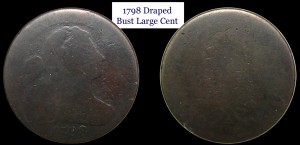
A very worn flat 1798 Draped Bust Large Cent. It took a lot of light and a 16x loupe to determine the date!
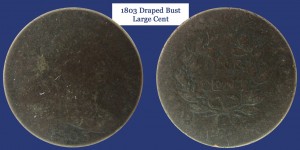
Another worn flat Draped Bust Large Cent. This one is from 1803 and just has a lot of character.
Now if you would excuse me, there are some tokens and medals from my hometown of New York I bought at the Whitman show I need to add to my collection.
Morgan dollar image courtesy of PCGS.
Feb 19, 2014 | fun, other, video

Installation of Vote McGovern and Mao paintings at the Warhol Museum.
Warhol was also a bit of a philosopher. His unique views were often quoted and made profound by the utter simplicity of his ideas. If you read his 1977 book, The Philosophy of Andy Warhol, you will get a sense of his philosophy and a look at what the world was like in the mid-1970s.
Philosophers are usually considered weird or crazy until history gets to look back and see how profound they really were. This is the case with Andy Warhol. Arguably his most famous quote was, “In the future, everyone will be world-famous for 15 minutes.” Warhol said this in 1968, almost 35 years before social media and reality television would change how people became famous.
Are you looking for your 15 minutes of fame? Do you want to be on television with a real speaking role and not as part of a videobomb? Then I have learned of an opportunity for you.
If you have unique coins or currency or anything numismatic that you want to sell and want to be on television, then you can be on the History Channel hit series Pawn Stars at the World’s Famous Gold and Silver Pawn Shop in Las Vegas.
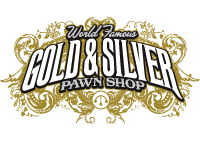 Recently, I had been contacted by one of the casting assistants from the production company that produces Pawn Stars looking for people to be on the show. They are looking for unique items and sellers to come into the shop. Not only will you be able to sell your item, but you will do it on television and meet the Pawn Stars. Maybe you can even meet the newly slimmed down Chumlee!
Recently, I had been contacted by one of the casting assistants from the production company that produces Pawn Stars looking for people to be on the show. They are looking for unique items and sellers to come into the shop. Not only will you be able to sell your item, but you will do it on television and meet the Pawn Stars. Maybe you can even meet the newly slimmed down Chumlee!
According to Left Field Pictures, the show’s production company:
If you will be visiting the Las Vegas area soon and have an amazing or unique item that you would like to sell on the show, we want to hear from you! Email us at: pawnstarstvshow@leftfieldpictures.com.
Be sure to include the following info:
- Your Name
- Contact number
- Description of your item (the more info the better!)
- Detailed Photos of your item
If you and your item qualify and are selected, you could meet the Harrison’s and be on Pawn Stars!
PLEASE NOTE: the above information is required for all items in order to take them into consideration. We cannot offer appraisals for items that do not appear on the show.
Some of the numismatic items I have seen on the show include encased postage, a collection of Republic of Texas currency, rare tokens issued by mining companies to their employees, and shipwreck gold coins. I have also seen Charmy Harker, The Penny Lady, on the show. You might have seen Harker’s exhibit “Penny Potpourri” at recent coin shows, she appeared on Pawn Stars in 2012. She tried to sell a World War II-era aerial bomber camera to Corey. It was quite a treat to see someone you know on television!
If you appear on the show, contact me. Not only do I want to hear about it but I would like to interview you about your experience. Take some pictures and I will extend your 15 minutes of fame here!
Image of the Warhol Museum courtesy of the
Warhol Museum in Pittsburgh.
Gold and Silver Pawn Shop logo courtesy of the Gold and Silver Pawn Shop.
Jan 14, 2014 | coins, fun, shows, silver, tokens
Going to a coin show in another area of the country is an education on seeing how others do the shows and meeting dealers who do not travel to your area. For me, attending the FUN Convention in Orlando was this type of experience. Yes, there were the usual big name, high volume, and high-end dealers present as they are at any show, but there are other dealers whom I have never met before.
Saturday was spent in three parts. When I arrived at the convention center, I went directly to the exhibits area. As a wannabe exhibitor with two (what I think are) good ideas, I wanted to see how others present their ideas. For the most part, I was a little disappointed in the exhibits. Many were mundane and typical. There were only a few exhibits that really stood out.
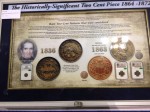
This Historically Significant 2-cent Piece by Tom Ulram of PAN
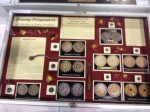
“Penny Potpourri” by Charmy Harker won Best in Class, Show, and People’s Choice
The second part of my day was schmoozing. There is nothing like meeting numismatists of all type on a bourse floor and just talk with them. I spoke with people I know, dealers I did not know until I sat at their table, and with visitors looking at various items wanting more information. I had the most fun at the American Numismatic Association traveling exhibit explaining the history behind the various items of currency that were on display.
Speaking of the ANA traveling exhibit, I was a little disappointed in the presentation of what was exhibited. Aside from not having the currency labeled with information, the case with the errors had just coins placed in the case without description or context. Many of the bland collector exhibits were done better than what the ANA presented.
FUN organizers understand that the idea of having a how is to have fun (pun intended). One exhibit area that I have only seen at FUN is the artists’ area. The artists’ area was in the back of the hall off the center aisle where tables were set in a square that hand artists making jewelry and art from coins. There were a number of artists making modern Hobo Nickels, a bead artist who used coins as part of the beading work, and someone who made large rings with carved coins.
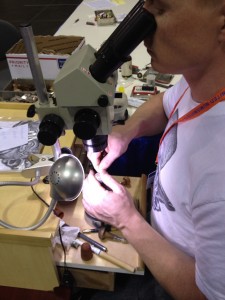
A modern Buffalo Nickel artist carves coins at the FUN Show

The rings from another artists features designs using coins (see top row)
Another fun area was the panning for gold. On the other side of the hall was a large booth set up with troughs that had mud and tiny gold nuggets. It was fun to walk up and watch the kids swirl the pan and find a tiny gold nugget. I do not know how much gold was in that water, but it was a lot of fun giving it a try. No, I did not find a gold nugget!
Of the large shows I have attended, FUN has had the most diverse attendance. There seemed to be more families, women, and minorities than even at the World’s Fair of Money. Another pleasant surprise was the number of women taking the lead with the young numismatists around the bourse floor and many of those YNs being girls. There were also quite a few Hispanic collectors with their YNs buzzing around the floor. Since I do not speak Spanish I could tell they were enjoying themselves just be observing their body language.
Diversity is good in both the hobby and life. No single group has the answers and attracting people with diverse backgrounds and perspectives is good for everyone. I do not know if the organizers of FUN advertise the show in minority communities or in areas that would attract diverse interests, but they should share what they do with the rest of the numismatic community since it is working.
As for my purchases, I was looking for a few silver bullion coins. Of the ones on my personal want list I was able to pick up the 2013 25th Anniversary Canadian Silver Maple Leaf and the 2014 Chinese Panda. I did not find the 2013 all-silver Britannia and I forgot about the 2013 and 2014 Australian Silver Koala. Since I already own the 2013 American Silver Eagle Proof, I should be almost caught up with my silver collection.
In my attempt to find something that I can say “oh… neat,” I did find three items that category. First, to add to my New York City collection is a Type 2 or “Large Y” subway token without the large “Y” punched. This token would have been used from 1970, when the fare was 30-cents, through 1980 for a 50-cents fare. I have seen many mis-punched tokens, but this is the first I have seen without the “Y.”
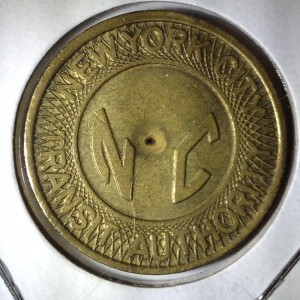
New York City Type 2 Subway Token error. It’s missing the punched out “Y”
My next “oh… neat” item is a Dad’s root beer bottle cap but with a 1953-D Lincoln cent wedged inside the cap. I do not know if this was done by Dad’s or someone else, but the folding of the cap around the coin looks too perfect to have been done manually. Even if it was done by someone as a good luck piece, it was very interesting.

The bottle cap of a Dad’s Root Beer bottle. A 1953-D Lincoln cent is embedded in the reverse!

A 1953-D Lincoln Cent is “trapped” inside this Dad’s Root beer bottle cap
Finally, I found a 1940’s era oil rationing coupon book. Obviously issued during the war, the coupon book limited the holder to up to $25 of home heating oil from the Service Oil Company of Hibbing, Minnesota. Hibbing is in what can be described as northeast Minnesota where it is not exactly warm. As I type this, the Weather Channel is reporting that the temperature in Hibbing a 1F! What makes this coupon book unusual is that it is unused with all the coupons attached from frigid norther Minnesota. It has survived over 60 years in nearly pristine condition. Now that is “oh… neat!”
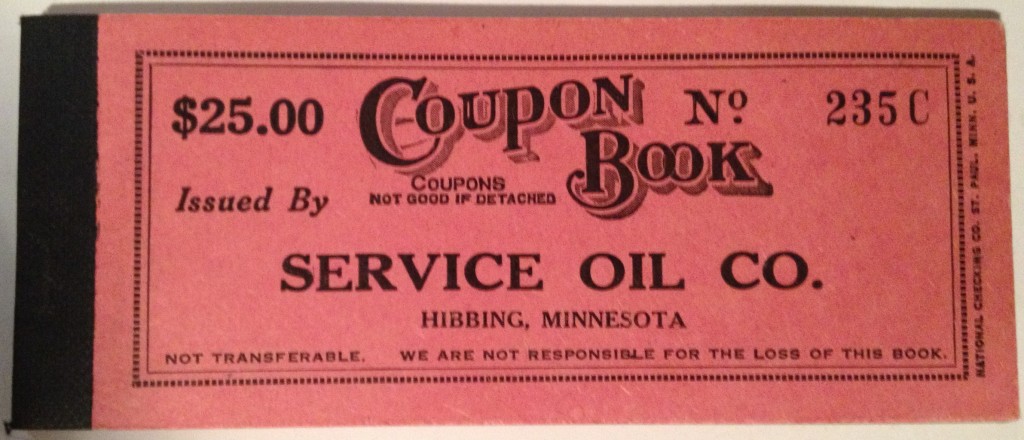
A never used home heating oil rationing coupon book from the World War II era.
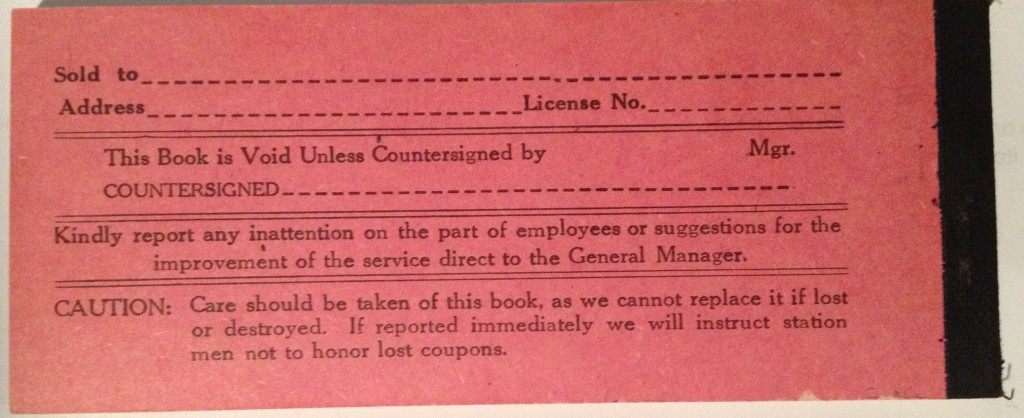
Back cover of an unused home heating oil coupon book. It was printed for but never issued by Service Oil Company of Hibbing, MN
If you have not been to FUN you should try to go. At least take the family. They can go to a theme park while you hit the bourse floor!
Photo Album
Sep 13, 2013 | cents, coins, fun
 When Teddy Roosevelt became the 26th President of the United States following the assassination of William McKinley, he set out to reform the United States into a robust nation giving everyone opportunities while protecting what he felt made this nation great. One of Roosevelt’s reform was to redesign U.S. coinage that he called his “pet crime.”
When Teddy Roosevelt became the 26th President of the United States following the assassination of William McKinley, he set out to reform the United States into a robust nation giving everyone opportunities while protecting what he felt made this nation great. One of Roosevelt’s reform was to redesign U.S. coinage that he called his “pet crime.”
Roosevelt hated the designs created by U.S. Mint Chief Engraver Charles E. Barber. In fact, Roosevelt had called Barber’s designs “atrociously hideous.” Roosevelt ordered coinage whose designs were more than 25 years old to be redesigned. Since Roosevelt was a fan of sculptor Augustus Saint-Gaudens, he asked Saint-Gaudens to help redesign American coinage.
Before Saint-Gaudens would finish, he died of cancer in 1907.
Roosevelt still wanted to redesign the cent but did not have any ideas. In 1908, Roosevelt was posing for a Panama Canal service medal that was being designed by Victor David Brenner. Brenner, an immigrant who admired Abraham Lincoln, suggested that he design a coin honoring Lincoln to coincide with the centennial of Lincoln’s birthday in 1909. Roosevelt asked for samples and agreed to Brenner’s design proposal.
Brenner designed the reverse of the with two ears of durum wheat, one the most prolific wheat grown in the United States today. Wheat is the United States’ most successful crop and largest agricultural export.
Not only is it a successful crop, but over the 50 years in production, the U.S. Mint has produced a lot of its own wheat with every cent it made.
If you think about it, all that wheat could make a lot of bread.
- The seeds on the stalk of wheat is called a kernel.
- On average, there are 48 kernels in a head of wheat and 15,000 to 17,000 kernels in a pound.
- According to the National Association of Wheat Growers, there are 1 million kernels of wheat in a bushel.
- Since there are two heads of wheat on the reverse of the Lincoln cent, there are about 96 kernels of wheat per coin.
- According to the U.S. Mint, there were 25,980,000,000 (25.98 billion) wheat cents struck between 1909 and 1958.
- To find the number of kernels of wheat produced, multiply the number of kernels per cent (96) by the number of cents struck: 96 x 25,980,000,000 = 2,494,080,000,000 (2.49408 trillion) kernels of wheat.
- If there are 1 million kernels of wheat per bushel, 2.49408 trillion kernels/1 million = 2,494,080 bushels of wheat produced by the U.S. Mint.
- The National Association of Wheat Growers claim a bushel of wheat yields 42 one-and-a-half pound commercial loaves of white bread or about 90 one-pound loaves of whole wheat bread. Let’s use an average of 66 loaves of bread per bushel.
If 25.98 billion wheat cents yields 2.494 million bushels of wheat where each bushel yields 66 loaves of bread, if the U.S. Mint all the wheat struck on every Lincoln cent between 1909 and 1958 would have produced 164,609,280 loaves of bread.
Don’t like bread? What about pasta?
If a bushel of wheat makes 42 pounds of pasta, which is about 210 servings of spaghetti, 2.494 million bushels of wheat would have produced 104,748,000 or 523,740,000 servings of spaghetti.
We’ll need a few extra meatballs for dinner!
Credits
- The idea for this post came from Montgomery County Coin Club Treasurer Jack Schadegg during a talk at our recent coin club meeting.
- Various sources were used to calculate and verify the production of Lincoln cents from 1909 though 1958.
- The National Association of Wheat Growers’ website provided the capacity figure.
- Lincoln cent wheat ears reverse image courtesy of Wikipedia.
Jul 30, 2013 | coins, dollar, fun
I found this poem by Clifford Johnson on a site named OpEdNews.com. It is worthy of everyone enjoying here:
S. 1105: Dollar Coins or Paper Dollars?
by Clifford Johnson
Coin or paper?
What a caper!
One is proper,
one a whopper.
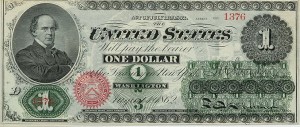
Drastic
is what’s inelastic,
plastic
more than gold’s fantastic.
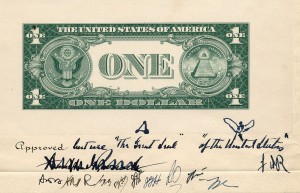
What is copper
to a shopper,
what a penny?
One too many.
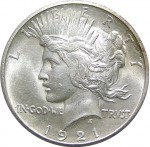
Paper powers
golden showers,
yet isn’t ours!
But a buck round
is square and sound.
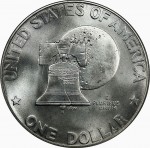
One is proper,
one a whopper.
Coin or paper?
What a caper!
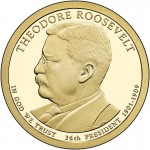
Images:
- First $1 bill issued in 1862 as a Legal Tender Note. (Wikipedia)
- President Franklin Roosevelt’s conditional approval of the one-dollar bill’s design in 1935, requiring that the appearance of the sides of the Great Seal be reversed, and together, captioned. (Wikipedia)
- 1921-D Peace Dollar. (Wikipedia)
- 1976-S Type 1 (1975) Eisenhower Dollar with Bicentennial Design. (Wikipedia)
- 2013 Theodore Roosevelt Dollar. (U.S. Mint)
Jul 21, 2013 | celebration, coins, fun, other
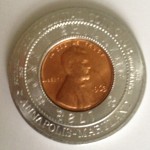
Encased cent given to attendees to the Colonial Coin Club’s 50th Anniversary celebration.
The Colonial Coin Club was founded in 1963 by members of the Baltimore Coin Club who commuted to meetings from Annapolis. While not that far of a commute, these members felt there was enough interest to form their own local club. The first meeting of the Colonial Coin Club was March 19, 1963. Fifty years later they are still a vibrant club serving collectors in the Annapolis area.
With my busy schedule, not only did I welcome the one night diversion to join the celebration at a nice restaurant in Gambrils, Maryland, but I had a chance to speak to congratulate them, encourage them to continue their good work for the next 50 years and beyond, and invite them to participate with the state organization and to visit the club I am president of, the Montgomery County Coin Club.
Colonial Coin Club has quite a history serving collectors in the eastern part of Maryland. Although Baltimore may be Maryland’s largest city, the areas around the Chesapeake Bay is the birthplace of the original Maryland colony. Although the Calvert family settled into what we now know as Baltimore, Annapolis was the colony’s economic hub. Amongst Annapolis’s residents was Jonas Green who became the colony’s official printer. Green served as an apprentice and worked for Benjamin Franklin in Philadelphia.
Green died in 1767 around the time that the colonial government was issuing its first currency. Taking over the printing business was his wife Anne Catherine Green making her the first woman to publish a newspaper in the colonies. Because of the social stigmas against women in these types of position, she printed her name as A.C. Green.
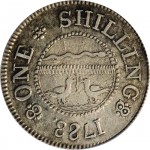
1783 Chalmers Shilling (PCGS XF 40).
The design of the Chalmers Shilling has been a matter of debate. Several references call the long animal depicted a worm while others call it a snake and the two birds as doves. Some claim the birds are fighting over the worm/snake and there is no speculation as to why the worm/snake is depicted over a hedge. If you consider Maryland’s history at the time, snakes were not as prevalent in the Annapolis area. Birds would be going after worms and the two birds, which could be doves, are not fighting but sharing the worm—a symbol of Chalmers trying to tell people to get along during the tense period of transition from being British subjects to a free country. Considering that the coins were designed by Thomas Sparrow, who also designed the Maryland currency when it was issued, The worm over the head was to show unity across the Maryland fields.
If nothing else, I am adding the speculation as to the meaning of the coin.
As part of the celebration, the club put together a nice book of their history with articles from their journals, members, press clippings, and images that also makes is a really nice modern scrapbook of the club. It is an impressive bit of work by Betty Meck, a past president of the club, with help from their current Secretary, club historian, and the member with the longest service to the club Hank Schab. Both of whom I had a pleasure to meet and want to make special note of their contributions.
Also attending was Will Mumford. Will is a past president of the Colonial Coin Club and archivist for the Maryland State Archives who wrote, Barter, Bits, Bills and Tobacco: The Story of Money in Early Maryland. Will also wrote Strawberries, Peas, and Beans about the Pickers Checks in Anne Arundel County.
For a good overview of picker checks, you can read Picker Checks, Currency of the crops [PDF] by Gilbert Sandler from the University of Baltimore archives.
Finally, I would like to thank Colonial Coin Club President Rod Frederick for inviting the Maryland State Numismatic Association to participate which allowed me to be there as their representative. I will be 103 when the club celebrates a century of serving the coin collectors of the Annapolis area. I hope they will invite me back to celebrate with them!
A few images of the Colonial Coin Club’s 50th Anniversary history and album:
Chalmers Shilling image courtesy of
Heritage Auction Galleries. Coin is from the January 2008 FUN Auction in Orlando and sold for $13,800 (including buyer’s premium).
 In the 1960s when my parents’ first child was becoming old enough to be enrolled in school, they decided it was time to move out of Brooklyn for the better schools of Long Island. One day, my father found an advertisement in the newspaper for some new homes being built in an old hamlet on Long Island called Inwood. In New York-speak, a hamlet is not an official location but a section of a larger village or township named for jurisdictional purposes. Hamlets are very much like any other area but without its own formal government.
In the 1960s when my parents’ first child was becoming old enough to be enrolled in school, they decided it was time to move out of Brooklyn for the better schools of Long Island. One day, my father found an advertisement in the newspaper for some new homes being built in an old hamlet on Long Island called Inwood. In New York-speak, a hamlet is not an official location but a section of a larger village or township named for jurisdictional purposes. Hamlets are very much like any other area but without its own formal government.





























